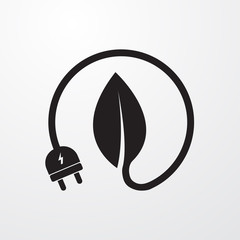This article was originally published on Patient Safety & Quality Healthcare (PSQH)
The healthcare industry—a vast category that includes businesses providing medical services, insurance, pharmaceuticals, supplies, and equipment—is also one of the largest contributors to greenhouse gas (GHG) emissions. According to a recent Health Care Without Harm report, the global average among industrialized countries is nearly 10% of national emissions, even more than the shipping or aviation sectors.
All of this carbon dioxide in the atmosphere is triggering rising temperatures and severe weather variability, causing expensive problems for healthcare facilities and presenting a multitude of serious climate disruption dangers. Hundreds of hospitals on the Atlantic and Gulf coasts are at risk of flooding from hurricanes. Long-term droughts increase a facility’s fire risks and water access, with nearly 7% of commercial water usage by hospitals. Many operations are housed in spaces with aging infrastructure prone to external weather damage and have energy-inefficient interiors running huge power draws around the clock.
Reducing reliance on fossil fuels
Reducing reliance on fossil fuels is a critical first step. Because of its large carbon footprint, anything this industry does toward sustainability efforts will help mitigate risks to healthcare institutions themselves and to their communities. The industry has the opportunity to lower its emissions scores by simply identifying where energy is used and where it is wasted.
The time has never been better to update aged lighting and energy systems and switch to renewable energy sources. Hospitals and related facilities that generate their own power instead of purchasing from the grid will likely see significant cost savings along with better carbon scores. Advancements in hardware, software, battery storage, and clean energy efficiencies allow for greater reliability, autonomy, and security from utility outages.
Reliable, safe power is imperative for healthcare operations, but there are opportunities for lowering usage. While cutting-edge medical equipment requires intensive amounts of power, this area is not the largest draw. Lighting accounts for 43% of all electricity use. Replacing traditional illumination with LED lighting can lower energy used by as much as 90%. Retrofitting illumination systems and converting to cleaner sources can dramatically improve energy costs while providing a comforting environment for patient care. Lighting and HVAC systems that respond autonomously to occupant levels will use appropriate energy levels with savings that add up over time.
Sustainability goals for hospitals
To meet hospital governance sustainability goals for reducing energy, healthcare sustainability and facility managers must methodically track and report progress. Automated systems can compile the thousands of factors required to measure, monitor, and report on energy reduction initiatives. Integrating modern technology that can compile and analyze reams of data is a game-changer over manual compilation, which invites risks of human error.
To make the transition while keeping power availability stable, sustainability managers require powerful tools to help them measure current conditions and implement decarbonization strategies wherever possible. Those managing sustainability programs for a healthcare facility must show progress and return on investment (ROI). Technology can monitor this expensive equipment and reduce usage costs by identifying problems with proactive maintenance and compliance measures.
Healthcare operations are under constant budgetary competition between clinical equipment and infrastructure projects. When facility managers use software that tracks real-time energy use, they can generate easy-to-understand reports that illustrate real-time savings in dollars, energy, and GHG emissions. Successful programs that show reliable and managed energy and reduced costs are essential to demonstrate the ROI that encourages further investments in sustainability.

Advocating for sustainability
Healthcare professionals are leaders in advocating for reducing harm to the climate. In 2022, the U.S. Department of Health and Human Services challenged the healthcare industry to lower its emissions by 50% by 2030 and aim for net zero by 2050. Since then, more than 100 organizations, including 60 of the largest hospitals, have signed on to the Health Sector Climate Pledge. In addition, The Joint Commission, a global driver of healthcare quality improvement, is proposing new energy measurement requirements to address environmental sustainability for the hospital and critical access hospital programs.
These entities have created plans to integrate renewable energy, report publicly on progress, inventory Scope 3 emissions, and develop detailed climate resilience plans to protect their communities and resources. Federal grant and information resources are available regarding energy efficiency measures, retrofitting, scope factors, and other ways to build climate resilience. Leveraging technology designed to calculate and manage energy usage will create a powerful positive trend for lowering healthcare’s carbon footprint.
About the authors
Renée Jacobs joined Distech Controls as the healthcare business development manager in 2021 with a strong desire to provide solutions to healthcare organizations looking for more efficient and reliable ways to manage their buildings. She is a Certified Healthcare Facility Manager (CHFM), a Certified Healthcare Constructor (CHC), and a Fellow in the American Society for Healthcare Engineering (FASHE). She continues to educate individuals on working in healthcare environments as faculty for the American Society for Healthcare Engineering.
Ken Watson is director of enterprise sales for Atrius. He has extensive experience in energy management, sustainability, and energy procurement. He has a passion for sustainability and has worked with various commercial, industrial, and governmental organizations to help reduce carbon emissions while driving significant cost savings. Watson holds a degree in business administration & finance from Illinois Wesleyan University and is an AEE Certified Energy Manager (CEM) and a Certified Energy Procurement Professional (CEP).



